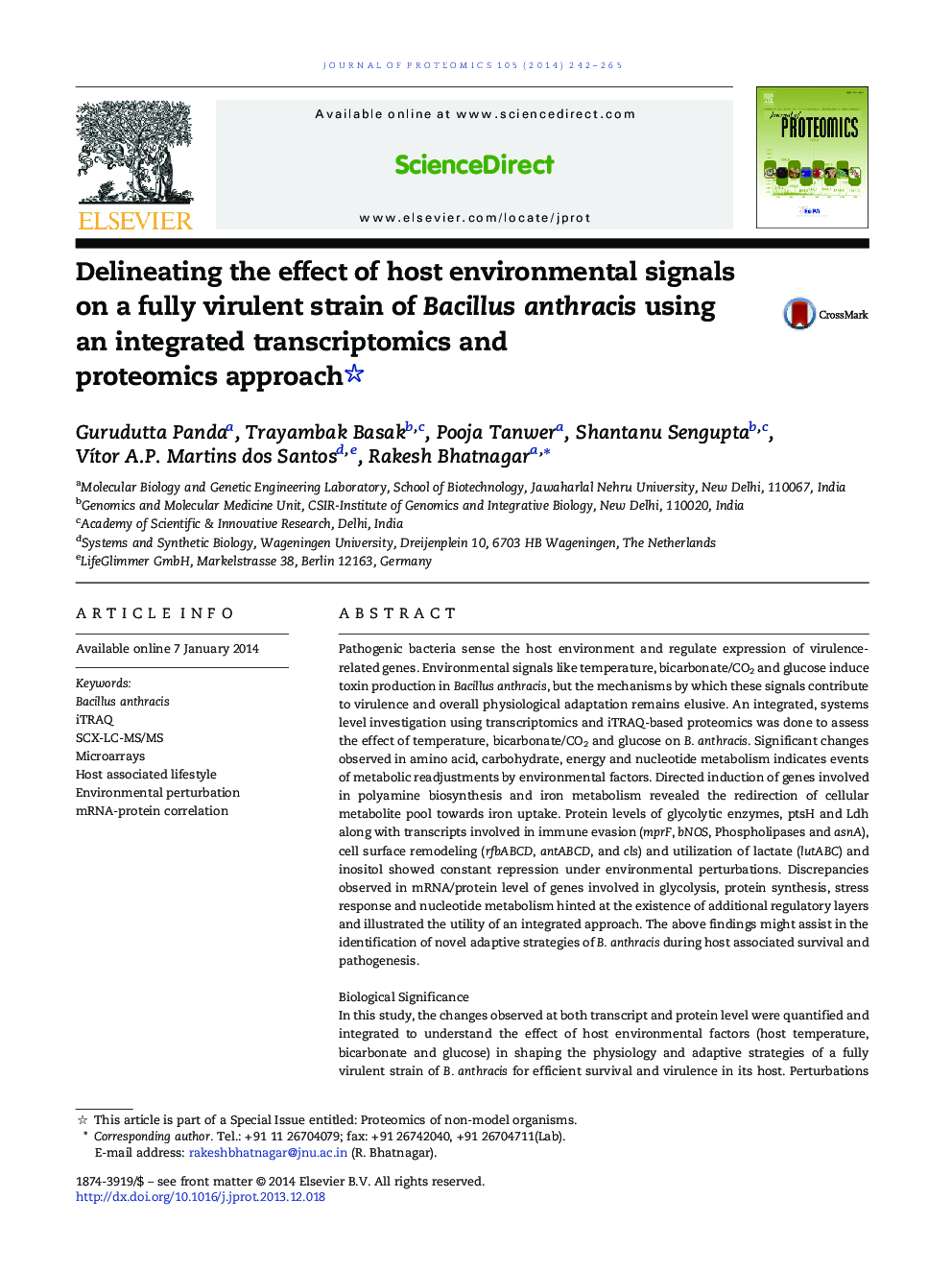| کد مقاله | کد نشریه | سال انتشار | مقاله انگلیسی | نسخه تمام متن |
|---|---|---|---|---|
| 1225159 | 1494775 | 2014 | 24 صفحه PDF | دانلود رایگان |
• Significant change in metabolism, host evasion mechanisms and virulence factors.
• Postulates physiological adaptations in Bacillus anthracis upon entry in the host.
• Discrepancies in mRNA-protein levels of genes in multiple functional categories.
• Hints at existence of additional regulatory mechanisms.
Pathogenic bacteria sense the host environment and regulate expression of virulence-related genes. Environmental signals like temperature, bicarbonate/CO2 and glucose induce toxin production in Bacillus anthracis, but the mechanisms by which these signals contribute to virulence and overall physiological adaptation remains elusive. An integrated, systems level investigation using transcriptomics and iTRAQ-based proteomics was done to assess the effect of temperature, bicarbonate/CO2 and glucose on B. anthracis. Significant changes observed in amino acid, carbohydrate, energy and nucleotide metabolism indicates events of metabolic readjustments by environmental factors. Directed induction of genes involved in polyamine biosynthesis and iron metabolism revealed the redirection of cellular metabolite pool towards iron uptake. Protein levels of glycolytic enzymes, ptsH and Ldh along with transcripts involved in immune evasion (mprF, bNOS, Phospholipases and asnA), cell surface remodeling (rfbABCD, antABCD, and cls) and utilization of lactate (lutABC) and inositol showed constant repression under environmental perturbations. Discrepancies observed in mRNA/protein level of genes involved in glycolysis, protein synthesis, stress response and nucleotide metabolism hinted at the existence of additional regulatory layers and illustrated the utility of an integrated approach. The above findings might assist in the identification of novel adaptive strategies of B. anthracis during host associated survival and pathogenesis.Biological SignificanceIn this study, the changes observed at both transcript and protein level were quantified and integrated to understand the effect of host environmental factors (host temperature, bicarbonate and glucose) in shaping the physiology and adaptive strategies of a fully virulent strain of B. anthracis for efficient survival and virulence in its host. Perturbations affecting toxin production were found to concordantly affect vital metabolic pathways and several known as well as novel virulence factors. These changes act as a valuable asset for generating testable hypotheses that can be further verified by detailed molecular and mutant studies to identify novel adaptive strategies of B. anthracis during infection.Adaptation of an integrated transcriptomics and proteomics approach also led to the identification of discrepancies between mRNA/protein levels among genes across major functional categories. Few of these discrepancies have been previously reported in literature for model organisms. However their existence in B. anthracis and that too as a result of growth perturbations have not been reported till date. These findings demonstrate a substantial role of regulatory processes post mRNA synthesis via post transcriptional, translational or protein degradation mechanisms. This article is part of a Special Issue entitled: Proteomics of non-model organisms.
Figure optionsDownload high-quality image (88 K)Download as PowerPoint slide
Journal: Journal of Proteomics - Volume 105, 13 June 2014, Pages 242–265
